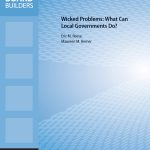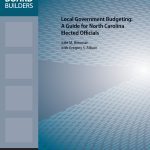![]()
Ten Questions about Local Governments: A Primer for Anti–Human Trafficking Advocates
Similar to most U.S. citizens, community advocates working to prevent or respond to human trafficking are likely to be mis- or uninformed about governmental functions, responsibilities, and lines of authority. That is understandable, given how complex and intertwined local, state, and federal programs and services can be.
Law enforcement agencies and departments of social services are two governmental departments likely to be involved in direct intervention efforts with victims of trafficking. People in other departments can play key roles as well, not only in identifying potential indicators of trafficking or in contributing services that enable the long-term recovery of victims, but also in informing or supporting change efforts.
The purpose of this publication is to provide anti–human trafficking advocates basic guidance in navigating city and county governments. Few answers would apply to all jurisdictions about who to contact with questions, or how processes work. Instead, this publication provides generic answers to beginning inquiries to help community advocates better understand government roles, functions, or procedures.
…
Continued





